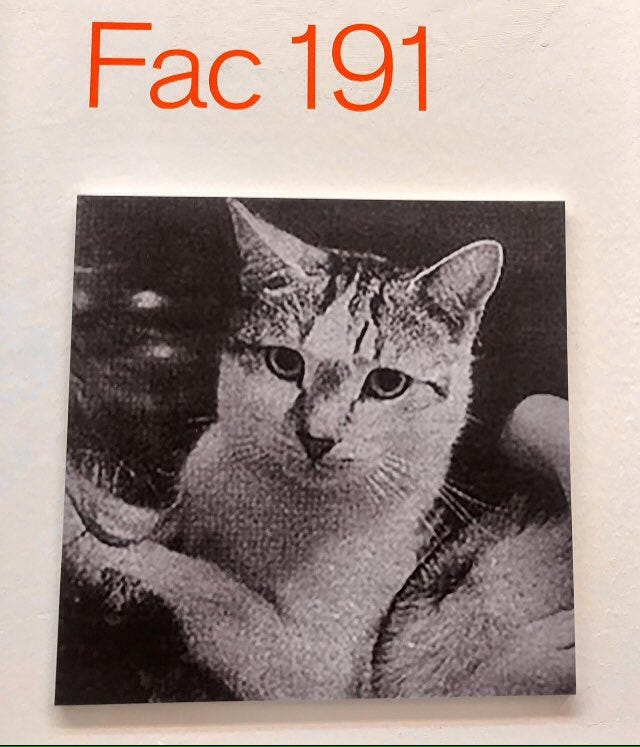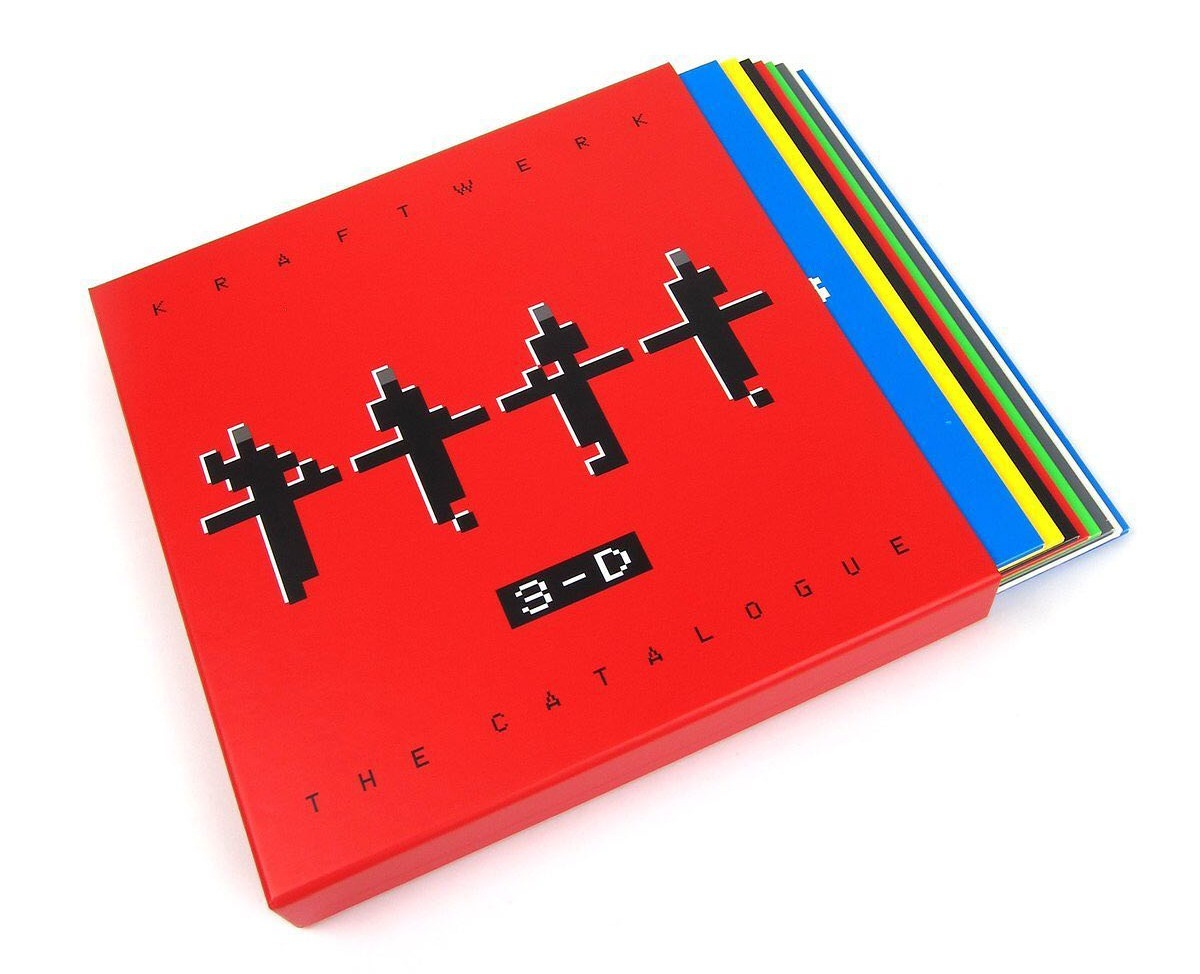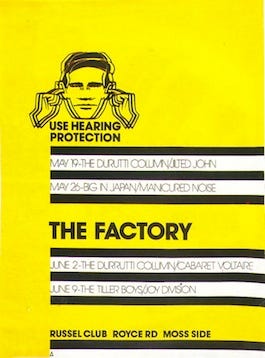Andy Warhol described his Factory as a "production line for creativity," erasing the boundary between commerce and art. This approach redefined what a record label or artist could be, reshaping the context in which they existed.
Recently, I spoke with Caspian (Head of the Cement Record Label) about how I've started numbering my Substack articles—an idea inspired by Factory Records, which took inspiration from Warhol's Factory. Initially, it was a way to organise ideas, with a spreadsheet full of drafts, releases, and shifting deadlines. But the more I considered it, the more it felt like an ethos rather than just a system.

Factory Records famously assigned catalogue numbers to everything—not just records but posters, club nights, and even a cat (FAC 191, Fred, the Haçienda's basement-dwelling mouser). This method wasn't merely an indexing method; it was a declaration that every action, object, and idea was part of a larger creative project.
Applying this logic to my label, writing, and other creative work isn't just about structure—it's about mindset. If a framework already exists that works, why not apply it universally? Why treat a label differently from other disciplines? It's the union of practicality and artistic vision, and that balance fascinates me.
Refinement vs. Expansion: Factory and Kraftwerk
Once I started numbering my articles, I asked myself: How far can this go? Should I catalogue my videos, essays, design projects—even unfinished ideas? Retroactively numbering past work feels like an act of refinement. This process reminded me of Kraftwerk, who have taken the concept of refining their catalogue to a near-obsessive level.
Unlike Factory, Kraftwerk never assigned catalogue numbers to past work; instead, they continuously refined their history, distilling albums into a cohesive, colour-coded vision. Their back catalogue has been reshaped, almost like a company updating its product line.
The contrast is striking: Factory embraced chaos and organic growth, while Kraftwerk pursued control and precision. One was an evolving archive of creativity; the other, an ever-refined art project.
The Role of Catalogue Numbers
This raises more profound questions: What does numbering represent? What did it mean for Factory to brand Joy Division's Unknown Pleasures as a "Factory Records Product"? Just as Motown was influenced by Detroit's car plants, Factory's industrial Manchester surroundings shaped its ethos. Warhol's philosophy—blurring high art and mass production—was embedded in Factory's DNA.

And what about Kraftwerk? Their obsessive refinement suggests an urge to control and perfect their legacy, ensuring every release fits their vision. There's an appeal in assigning meaning to everything, preventing creative work from being lost in digital obscurity.
For Factory, the numbering system was a declaration: every element—music, design, club nights, even legal battles—was part of the same artistic project. Peter Saville's artwork reinforced this idea; design was inseparable from the music. Factory's numbering system didn't just catalogue work—it mythologised it.
The Influence of Structured Labels
Factory wasn't alone in applying rigid cataloguing to music. Other labels followed, with varying degrees of success:
Warp Records – A strict WARP001, WARP002 system, extending to film and art projects.
Ghost Box Records – Feels like an archive of an alternate reality, its numbering system reinforcing its fictional aesthetic.
Raster-Noton – Treats each release as a scientific document rather than just music.
Mille Plateaux – Experimental, conceptual, numbered but often esoteric and impenetrable.
Yet, Factory remains unique—artistically brilliant but financially disastrous. Would I run my label like Factory? Never. Would I take inspiration from them? Absolutely.
The Benefits and Risks of Structured Creativity
✅ The Advantages:
Gives everything meaning – No forgotten ideas, no lost projects—just a structured creative world.
Creates mythology – Labels need more than just releases; they need a universe to explore.
Avoids trends – Focuses on long-term identity rather than fleeting success.
❌ The Risks:
Can be overwhelming – If everything is numbered, do you ever stop creating?
Risks over-intellectualisation – Music must remain central, or it becomes a self-indulgent art project.
Doesn’t guarantee success – Factory collapsed. Raster-Noton split. Mille Plateaux faded. Structure alone is no guarantee of longevity.
The Real Question: Expand or Refine?
So, where does this leave me? I love the idea of expanding my label into a structured, numbered ecosystem where music, writing, visuals, and ideas form a cohesive, creative world. But I also recognise the dangers of rigid models.
Do I number everything, turning my label into an ever-growing archive (Factory model)? Or do I refine, curate, and shape my catalogue over time (Kraftwerk model)? Are these two approaches mutually exclusive, or can I integrate both?
Factory's system was a brilliant yet flawed experiment. But despite its financial chaos, it remains one of the most compelling artistic projects in music history.
And that's worth learning from.








